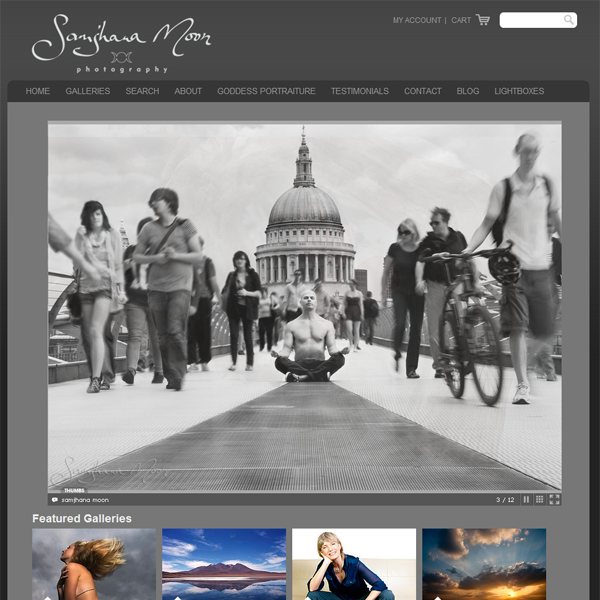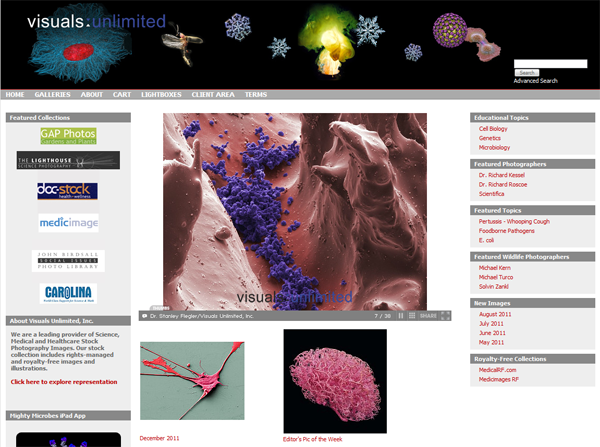Share
Does Your Website’s Page Design Affect Your Site’s SEO?
When the Google Panda update hit in early 2011, a handful of PhotoShelter members sent us an email saying that they were seeing up to 90% drops in ...

When the Google Panda update hit in early 2011, a handful of PhotoShelter members sent us an email saying that they were seeing up to 90% drops in their websites’ traffic. We found this strange, because our analytics showed that there was no event associated drop in search-based traffic (i.e. visitors who come to your site from search engines) when looking at an aggregate of all members’ sites.
We started to look for clues as to why some people were affected while others were not, and we engaged SEO expert Tom Critchlow from Distilled to help us analyze the problem. He suggested that perhaps certain sites were more affected because of their page design.
It was a bit of a jarring idea. We had been aware of concepts like Microsoft’s Vision Based Page Segmentation (VIPS) and Google’s “Ranking Based on Semantic Distance” for some time. These concepts, in essence, suggest ways to infer importance of any given website’s content based on its position on the page itself. For example, content appearing in the footer of a page is probably less important than content appearing in the main body area.
Still, the notion that simply positioning things differently might adversely affect SEO seems unusual. Why should a generic site that just happens to place good content at the top of its page benefit more from SEO than a higher quality site that puts it near the bottom?
When Panda was released, Google provided guidance on what questions webmasters should ask themselves if they had experienced a drop in traffic. In theory, Panda was designed to lower the ranking of poor quality sites. However, as many people experienced, some good quality sites also took a hit.
We tested this theory by analyzing fifty different PhotoShelter sites using two very different PhotoShelter themes: 1) Maui, and 2) Caboose. Maui is the default and most popular theme. Caboose is used by a lot of stock photographers for various reason. Each one inherently places various on-page SEO factors (h1 tags, gallery descriptions, etc.) in different positions.
We wanted to try to isolate on-page SEO factors as much as possible, meaning that we had to get a sample of sites from each theme that were nearly equal in all other SEO factors – perhaps the most important being backlinks. So we performed a backlink analysis using Majestic SEO on these one hundred total sites, and recorded the number of domains and backlinks for each. Outliers were thrown out, and we came to a final sample of sites from both themes that all had roughly the same number of backlinks and domains (A more fine grained analysis would also have considered “domain rank”, which attributes a number from 0 to 100 on how “powerful” any domain is SEO-wise, but we figured things would average out based on the size of our sample).
The results showed a material difference in content indexation – or what Google actually “reads” on the page – between the themes:
Maui: (avg: 2,500 images on-site), each site had:
- 3,715 pages indexed
- 420 images indexed (images indexed/# of images = 21.99%)
Caboose: with more images individually stored in each archive (avg: 4,937), each site had:
- 6,440 pages indexed
- 630 images indexed (images indexed/# of images = 15.95%)
Maui proved to be the “winner” in terms of greater percentage of indexed content. What’s important to note is that we’ve generally observed that sites with more indexed content tend to drive more search-based traffic. Also, there seems to be a ripple effect among search, referral, and direct traffic; while it’s impossible to determine causality, there was a negative correlation between search traffic and other traffic (i.e. when search traffic goes down, so do other traffic sources).
But before you say that the design is the sole cause, Tom also suggested that the quality of information might be poorer on the Caboose sites. Did these photographers provide adequate captioning and keywording? Did they rename their image files? Were they using known on-page factors like h1 tags to create a high-quality site? In a few sites that he observed, the textual information quality was poor, which led him to believe that they were already “on the threshold” before Panda hit. And once the algorithmic change was in place, they dropped below the threshold and were adversely affected. Was it page design? Was it content? Was it a combination of both?
In the end, we don’t really know for sure. But before you start worrying about a total site overhaul, I would continue to stress the importance of providing descriptive captions and content as much as possible.
Takeaway
Given the mysteries of Google algorithms, we’ll never really know for certain, but our test results indicate that on-site SEO factors play a major role in your site’s overall SEO. Don’t underestimate the importance of page titles, meta descriptions, and other on-page text, as well as the placement of these key elements within the site design. Provide descriptive captions and content as much as possible. Because we all deal with images instead of text, our websites are already behind the curve of having strong textual content.
Continuing to pay attention to and build your on-site text, including Homepage content, About page content, and strong gallery and image descriptions will only help your SEO efforts. If you too were impacted by the Panda algorithm update, refocus your attention to be certain you address these basic SEO factors – that in itself should help you regain your former status. And if you still see little-to-no change over the next 6-12 months, an outright site design change may also be worth considering if you your website’s structure is out of date with current SEO best practices.
Want more strategies and insights to improve your website’s search engine rankings? Sign up and get the free 39-page SEO for Photographers Workbook, plus more tips sent right to your inbox with our 4-week Bootcamp.






